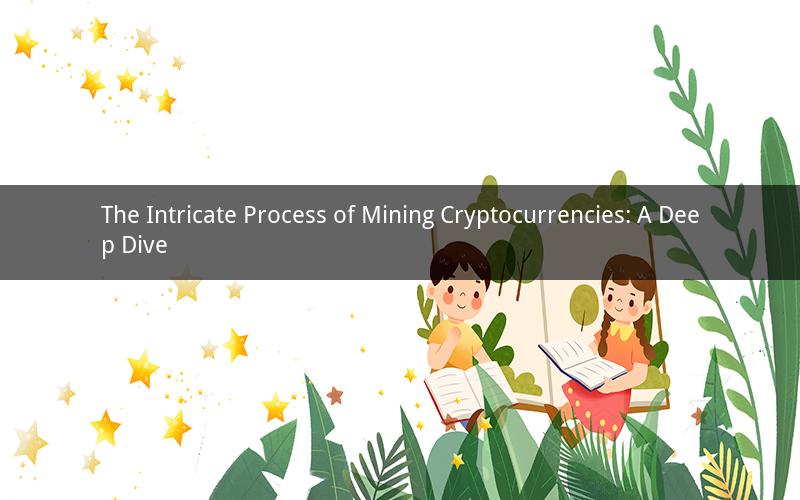
The world of cryptocurrencies has revolutionized the financial industry, and mining plays a pivotal role in its functioning. But how is a cryptocurrency actually mined? This article delves into the fascinating process, explaining the mechanics behind it and answering some common questions about cryptocurrency mining.
Cryptocurrency mining is the process by which new coins are entered into circulation. Miners use computer algorithms to solve complex mathematical problems, and in return, they are rewarded with cryptocurrency. The process is both challenging and resource-intensive, requiring significant computational power and electricity.
The mining process begins with the creation of a block. A block is a collection of transactions that have been grouped together and verified. Once a block is created, it is then broadcast to the network, where other nodes verify its validity. If the block is valid, it is added to the blockchain, and the miner who created it is rewarded with cryptocurrency.
Here's a closer look at the mining process, step by step:
1. Mining Hardware: The first step in mining is acquiring the necessary hardware. Miners use specialized computers called ASICs (Application-Specific Integrated Circuits) to solve the complex mathematical problems. These computers are designed specifically for mining and are much more efficient than general-purpose computers.
2. Mining Software: Once the hardware is in place, miners need to install mining software. This software connects the miner's computer to the blockchain network and allows it to participate in the mining process. There are various types of mining software available, and the choice depends on the specific cryptocurrency being mined.
3. Mining Pools: Many miners join mining pools, which are groups of miners who work together to solve the mathematical problems. Mining pools increase the chances of a miner finding a block and receiving a reward. However, they also share the rewards among all participants, which can reduce the amount each miner receives.
4. Solving Mathematical Problems: Miners use their computers to solve complex mathematical problems. These problems are designed to be difficult to solve, requiring significant computational power. When a miner solves a problem, they are rewarded with cryptocurrency.
5. Adding to the Blockchain: Once a block is solved, it is added to the blockchain. The blockchain is a decentralized ledger that records all transactions made with the cryptocurrency. By adding blocks to the blockchain, miners ensure the integrity and security of the network.
6. Verification and Reward: After a block is added to the blockchain, it is verified by other nodes in the network. If the block is valid, the miner who created it is rewarded with cryptocurrency. The reward amount varies depending on the cryptocurrency being mined and the difficulty of the mathematical problems.
Now, let's address some common questions about cryptocurrency mining:
1. What is the purpose of mining?
The purpose of mining is to maintain the integrity and security of the blockchain network. By solving complex mathematical problems, miners ensure that new coins are created and transactions are recorded accurately.
2. How does mining contribute to the value of a cryptocurrency?
Mining contributes to the value of a cryptocurrency by maintaining its supply and ensuring its security. As the supply of a cryptocurrency decreases over time, its value tends to increase. Additionally, the security provided by miners helps to prevent fraud and hacking attempts.
3. What are the challenges of mining?
Mining is a resource-intensive process that requires significant computational power and electricity. Additionally, the difficulty of the mathematical problems increases over time, making it more challenging for miners to find blocks and receive rewards.
4. How does mining affect the environment?
Mining consumes a lot of electricity, which can have a negative impact on the environment. The energy used for mining is often generated from fossil fuels, contributing to greenhouse gas emissions and climate change.
5. Is mining profitable?
The profitability of mining depends on various factors, including the cost of electricity, the price of the cryptocurrency, and the difficulty of the mining process. While mining can be profitable for some, it is not guaranteed to be so for everyone.
In conclusion, mining is a critical process that ensures the functioning and security of the blockchain network. By understanding the mining process and its challenges, we can appreciate the importance of miners in the cryptocurrency ecosystem. However, it is essential to consider the environmental impact of mining and its profitability before deciding to become a miner.